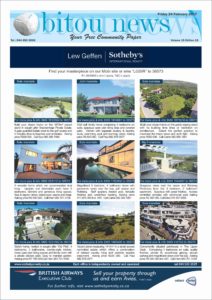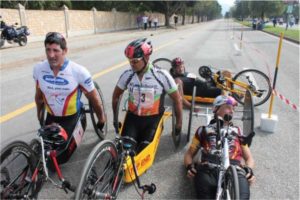LIFE… with Elsa
Why are educators emotionally drained?
Aside from all the admin, after school activities and marking books, there is an emotional side to being a teacher. Each one of us has a mirror on our chest. On this mirror, we carry all our beliefs and perceptions. We constantly mirror/reflect those beliefs and perceptions in each other leading to conflict, misunderstanding, trauma etc. The mirroring/reflection can also have a positive outcome, hence some people become very good friends. If you are an educator with 15-50 students in your classroom, you are bound to reflect something in your students and them in you.
What do mirroring and reflecting mean?
When someone does/say something that upsets/annoys/frustrates you, it is because they reflect something in you.
Example; Lucy is always late for Mr Ruter’s class. He is furious every time and scolds her. There is something in Lucy’s mind that makes her late for every one of Mr Ruter’s classes. Mr Ruter then takes it personally and might feel she doesn’t have respect for his time. When Mr Ruter is able to stay calm and realise that there is something else that makes Lucy late, he will actually access a different part of his mind that allows him to have a different approach to Lucy’s behaviour.
Most of us thought that students are just being rude / disrespectful or act like teenagers when in fact, it goes much deeper. Reflections are usually/mainly from perceptions. Do you understand then that Educators need to deal with much more than what was ever mentioned or expected?
How can Educators then help themselves to get rid of the reflections? Good news: When we control our perceptions, we control the reflections.
This is how:
Step 1 Write all your perceptions down about;
Yourself as an educator
Your classroom
Your students and their abilities
Step 2: Find the perceptions that might have a negative impact on yourself and your students.
Step 3: Find the belief / root / thinking pattern behind those perceptions.
Step 4: Change them with what it is you want by visualising the difference between the new line of thought and the old perception.
Sounds complicated / Too difficult / Struggling? Contact your expert Master NLP Practitioner, Elsa Cronje. 
JAGUAR SIMOLA HILLCLIMB
Every year since its inception in 2009, Knysna’s Jaguar Simola Hillclimb (JSHC) has become bigger and better. However, this year’s eighth edition – the fourth with Jaguar as the title sponsor – will undoubtedly be the most breathtaking and exciting yet.
Brian Joss – “We are delighted and overwhelmed by the level of interest expressed amongst competitors for this year’s Jaguar Simola Hillclimb,” says Geoff Goddard, the event’s Sporting Director. “Classic Car Friday and King of the Hill were both oversubscribed by more than 150 percent, proving exactly why the Hillclimb is regarded as one of South Africa’s premier motorsport events.”
As usual, Goddard had the arduous task of sifting through all the entry applications and leading the panel that decided which competitors would make the cut for this strictly invitational event which will take place from May 4 to May 7.
Following a rigorous selection process aimed at delivering the most alluring mix of cars and drivers, the entry list for Classic Car Friday has been finalised. A total of 64 competitors competing in no less than 32 different marques will take to the start line on May 5 at the bottom of the Simola Hill, ready to attack the unforgiving, tight and twisty 1.9 km course.
For King of the Hill, which now introduces separate categories with equal status for Road and Supercars, Single-seaters and Sportscars, as well as Racing Saloon Cars, fans will be treated to a tantalising mix of 29 brands occupying a total of 84 berths for the 2017 JSHC.
It’s not just the cars that will delight the fans, as the driver line-up is likely to be the most intriguing to date. A total of 11 competitors have participated in every edition held to date, and will be returning to the action for their eighth consecutive finisher’s badge this year.
The intimate and friendly nature of the Jaguar Simola Hillclimb ensures that fans can see their heroes and meet them first-hand – for which the limited number of Pit Access tickets are a must!
Two-time Classic Car Friday champion (2014 and 2016) Franco Scribante will be the one to watch again, along with 2015 winner Charles Arton. They will be joined by two competitors from the United States, and one each from the UK and Germany.
For 2017, King of the Hill has been split into individual competitions with equal status for standard Road and Supercars, Single-seaters and Sportscars, as well as Racing Saloon Cars, respectively.
Reigning double champion Franco Scribante will be the man to beat in his extremely fast Chevron B26 sports car, while 2015 overall winner Des Gutzeit will be back with a vengeance amongst the tin-top contenders in his mighty Nissan GT-R. He will be going head-to-head with several former winners, including son Jade (2012) in a Mitsubishi Lancer Evo 7, Wilhelm Baard (2011) in a Nissan GT-R and the legend himself, 2010 winner Geoff Mortimer in a Mitsubishi Lancer Evo 9. Three drivers from the US are set to join the action this year as well, thus giving the Hillclimb a truly international flavour.
Cross out the dates on your calendar and be sure to book your accommodation early, as the 2017 Jaguar Simola Hillclimb is definitely not to be missed!
Motorsport enthusiasts can secure their places for the 2017 JSHC as admission tickets are available at www.itickets.co.za, a convenient online portal where all Day, Weekend and Pit Access tickets can be purchased.
Visit: www.jaguarsimolahillclimb.com for more info. -THEGREMLIN
WALKING FESTIVAL 2017
South Africa’s first walking festival is building on its inaugural success and getting ready to put its boots on for a second year. The Hi-Tec Garden Route
Walking Festival takes place over the Easter Weekend with an offering of over 52 different walks to choose from between Mossed Bay, George, Knysna, Plett and
Natures Valley. The festival is an exciting option for visitors and locals to get off
the beaten track with easy walks or adventurous hikes on the Garden Route.
Arguably one of the world’s great walking destinations, the Garden Route is the ideal
place to host South Africa’s only walking festival, with its beautiful mountains, secret
forests, cascading waterfalls, coastal cliffs, incredible beaches and world famous trails.
“Walking festivals are an ideal way to discover new places and meet new people who share a passion for the outdoors, and our festival is unique, as it involves the support and involvement of all the local communities, from volunteer walk leaders to professional guides. Hi-Tec, a brand which has become synonymous with hiking in South Africa, are committed to the event, which enables us to offer a wide range of walks for free and catering to all levels of fitness and adventure,” comments festival founder Galeo Saintz.
And there really are walks for everyone, from slow saunters along the beach at the end of the day, to brisk walks up some of the regions highest peaks, such as George Peak
and Peak Formosa in the Tsitsikamma. Some of the traditional walks include the Brown-
Hooded Kingfisher Trail or Circles in the Forest Elephant Walk, and for the more intrepid, there is a Nature’s Valley to Plett Walk. A collection of festive walks such as the Fancy Dress Masked Walk at sundown, or the Inner Magic walk for kids, promise great fun with friends and family. A highlight for the kids is the Coastal Pirate Walk and Treasure Hunt on Easter.
CONTACT DETAILS:
Organiser: Galeo Saintz
Cell: 082 888 8181
Email: info@walkingfestival.co.za
ANATOMY & DEVELOPMENT IN CATS
In a cat’s nervous system, electrical impulses travel via nerve fibers, which deliver messages to cells and organs. Chemical transmitters are also used for communication between different nerve cells and other tissues they communicate with. The nervous system is a very complex network.
Anatomy
Central Nervous System: In mammals, the nervous system is divided into several segments. The central nervous system (CNS) is made up of the brain, brain stem, and spinal cord. The peripheral nervous system (PNS) includes the nerves that run from the brain to areas of the head and neck, and also those nerves exiting and entering the spinal cord. These nerves carry messages from the CNS to other body areas such as the legs and tail. Nerve impulses travel from the brain down the spinal cord, out the peripheral nerves, to the tissues and back again.
Peripheral Nervous System: Peripheral nerves that go from the brain or spinal cord are called motor nerves. These nerves affect muscles, i.e., they control movements, posture, and reflexes. Peripheral nerves that return to the brain or spinal cord are referred to as sensory nerves. These nerves carry information (such as pain sensation) from the body’s structures back to the central nervous system.
Autonomic Nervous System: Another set of nerves comprise the autonomic nervous system (ANS). The ANS (which arises from the CNS) contains nerves which control involuntary movements of organs such as the intestines, heart, blood vessels, bladder, etc. Cats have no voluntary control over the autonomic nervous system; it functions automatically.
Development of the nervous system
Coordinated Movement: A kitten is born without a fully developed nervous system. The brain, spinal cord, and associated nerves are present at birth, but lack the capacity to adequately transmit electrical impulses in a coordinated fashion. As the nervous system matures in the initial weeks of life, a series of nerve controlled events begin to become evident. During the first week of life, it seems that kittens do little but eat and sleep. They do have some motor activity, moving even while seemingly sound asleep. By the second week of life, a kitten still spends a great deal of time sleeping, but the sleep becomes quieter, or more restful, with fewer body movements. Awake moments are typically spent nursing. By three weeks of age, most kittens can maintain an upright posture and begin to spend more time awake. They attempt to move by pushing or sliding, as they are still unable to stand and walk. The initial attempts at ‘crawling’ are usually short, as the muscles are not strong. After three weeks of age, the kitten will develop the ability to stand, and perhaps walk, short distances. Eventually, over the next few weeks, the kitten becomes fully mobile and able to walk, and even run, in a clumsy sort of fashion.
Vision: Kittens are born blind with closed eyelids. The eyelids open by fourteen days of age, exposing the eyeball which now is only mildly sensitive to light. Most kittens will have vision by three to four weeks of age, but it will not be fully developed until after ten weeks of age.
Hearing: Kittens are born deaf as well as blind. Just like the eyelids, the ear canals remain closed until about two weeks of age. At about two weeks of age, most kittens can hear some noises. At this age, they are easily startled by sharp noises. By four weeks of age, most kittens will hear the sounds without becoming startled. Kittens over four weeks of age can hear quite well.
All of the above developments, the walking, vision, and hearing, are controlled by the nervous system. The exact age at which these abilities develop is variable. The ages mentioned are the average, not the rule.
Disorders of the nervous system
Nervous system disorders may result from improper development of the nervous tissue and its associated organs, or from damage due to trauma or infections. Many conditions exist which are genetic in origin.
OUTENIQUA WHEELCHAIR CHALLENGE
The 15th annual Outeniqua Wheelchair Challenge, a race exclusively for athletes living with physical disabilities was held in George today with South African athletes dominating in the winners’ circle. The winners in the 42km men’s race was won by Steward McCreadie (South Africa) in the hand cycle category, Ernst van Dyk (South Africa) in the racing chair category and Pieter du Preez (South Africa) took the men’s quads title. Claiming victory in the women’s 42km race was Justine Asher (South Africa) in the hand cycle category and Ayishetu Seidu (Ghana) in the racing chair category.
The streets of George were filled with helpers and supporters from early morning as the more than 1 500 wheelchair racers tackled a tough new course over the standard marathon and half marathon distances of 42.2km and 21.1km. There was also a fun race of 5km for community members and supporters who wanted to push the athletes or walk with them.
Sponsored by George Airport, the race once again attracted competitors from all over South Africa and as far afield as Ghana, the United Kingdom and Zimbabwe. The George Municipality has led and facilitated the event over the past 15 years.
Brenda Vorster, Manager of George Airport, believes the Outeniqua Wheelchair Challenge is growing in stature and reputation among athletes living with physical disabilities and has become the airport’s flagship project.
“The course is a strong test of fitness, strength and mental preparation. The fact that there are so many athletes participating and such good crowds along the course is testament to the growing popularity of the race.” says Vorster.
“It is very rewarding to see how the event has grown in leaps and bounds. The resilience and determination of the athletes, watching them improve their performance year after year and then move onto competing on the global stage shows us that our investment in this event has a demonstrable impact”,.
The event would not be what it is today without the support of the community in and around George. The pride and excitement from supporters and volunteers at this year’s race was almost electric. Even the rainy weather could not dampen the spirit that the OCC brings to the beautiful town of George, which has become the tourism gateway to the Garden Route.
Ansie Swart, organiser and champion of the Outeniqua Wheelchair Challenge, believes that the race is now firmly in place as the premier event for athletes living with physical disabilities. “There are road races for able-bodied athletes that have become iconic and always fire up the imagination. We feel that the Outeniqua Wheelchair Challenge is well on its way to earning such iconic status for athletes living with physical disabilities,” she says.
Swart hopes to continue developing the race so that it attracts not only more world class athletes but also participants from communities all around the country.













